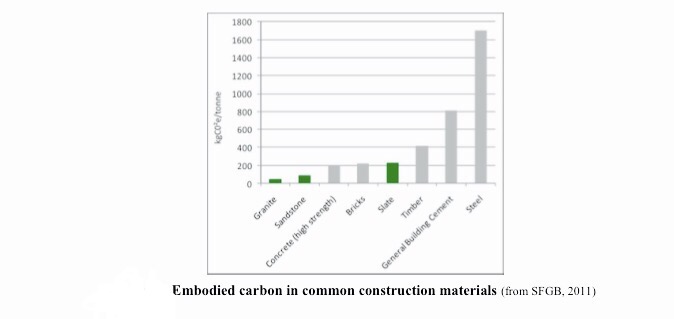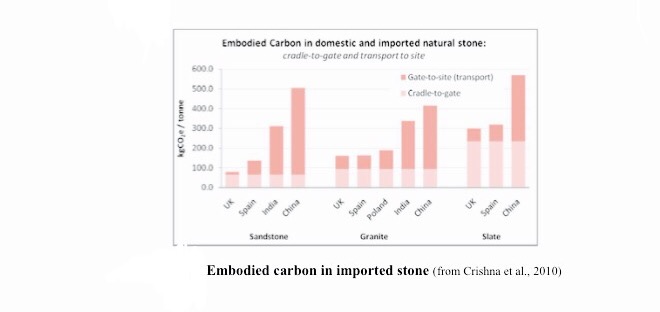Property Condition and Energy Efficiency
Property Condition and Energy Efficiency
Overview of Low Carbon Impact for Domestic Homes
Residential sector accounts for 33% of carbon emissions in Scotland and therefore Scottish Traditional Building Forum (STBF) believes housing must play an important part of any strategy for reducing Scotland’s carbon emissions.
STBF believes that this should take a two pronged approached to address existing homes and new homes.
Existing Homes
- 33% of the industry’s annual £9.6 billion turnover comes from the repair and maintenance of existing building stock, with an estimated £0.6 billion spent on pre- 1919 buildings each year.
- Properties which are not wind and watertight cannot be carbon efficient. Older homes have higher incident of disrepair and higher incident level of fuel poverty.
- For that reason, STBF believes that the condition of Scotland’s properties needs to be urgently addressed as part of a larger strategy to reduce carbon emissions in Scotland.
New Homes/Buildings
- Full Carbon Life Cycle costing should be taken into account during design/planning.
- Low embodied carbon building materials should be used.
- Carbon emissions in the transportation of building materials should be taken into account.
- Economic benefits to using locally sourced materials.
Background
Existing Homes
Of the existing domestic structures we have today, 85% will still be in use by 2050 when Climate Change (Scotland) Act has specified an 80% reduction in carbon emissions.
Section 35 of the Act requires that the Scottish Government produces a report on proposals and policies that set out how they intend to meet climate change targets.
For properties to be energy efficient, STBF believes the condition of Scotland’s properties needs to be urgently addressed by undertaking repairs to failed critical elements then ongoing maintenance to ensure they do no reoccur. Particular attention should be paid to traditional homes (pre 1919) due to highest level of disrepair and of fuel poverty.
The Scottish Government’s Our Place in Time states: 33% of the industry’s annumal £9.6 billion turnover comes from the repair and maintenance of existing building stock, with an estimated £0.6 billion spent on pre- 1919 buildings each year.
Condition of Scotland’s Properties – The current condition of Scotland’s properties is poor but property owners are not aware of the full extent of their buildings disrepair.
The Scottish Housing Condition Survey 2015 states: Over half (52%) of dwellings in Scotland have some disrepair to critical elements which make them wind and watertight. Older dwellings are more likely to have some form of disrepair with 68% of those built before 1919 having disrepair to critical elements.
Scottish Small Towns Report – The Scottish Small Towns Report stated that “every town surveyed had instance of serious disrepair.” The survey results suggested that some towns had a higher incidence of disrepair where in excess of 80% of the properties surveyed required some form of maintenance. The towns surveyed which faired better still required between 50% and 75% requiring maintenance.
The report suggested that approximately 70% of the properties surveyed would benefit from or will be required to have works carried out to remove serious defects.
“HOMES THAT DON’T COST THE EARTH” – “A consultation on Scotland’s Sustainable Housing Strategy”
Within this consultation it outlined a hierarch of needs to look after properties.
Looking after your home – a hierarchy of needs
Looking after your home: What is most important?
- Make sure that your home is wind and watertight and that it is structurally sound; make sure that it stays that way by carrying out regular maintenance.
- Make sure that work is done properly because poor quality repairs may be ineffective and can cost more in the long run.
- Consider retrofitting appropriate insulation.
- Make sure that your home is properly ventilated because this is essential to keep it healthy.
- Review your boiler to ensure that it is efficient.
- Ensure that points 1-5 have been addressed before considering microrenewable technology.
The Confidential Reporting on Structural Safety for Scottish Buildings report stated “When damage does occur to the envelope of a building, the energy performance of the building may be reduced, but opportunities could be taken with repair and maintenance programmes to install energy improving measures.”
Historic Scotland’s Short Guide Fabric Improvements for Energy Efficiency in Traditional Buildings states: “It should be said that proper and regular maintenance is a prerequisite to undertaking energy efficiency improvements in a traditional building. If a building is not watertight there is little point in making energy efficiency upgrades”, such as the home insulation.
The Scottish Government has acknowledged that “Improving Condition Homes can only become more energy efficient if they are in a good state of repair.” (http://www.scotland.gov.uk/Topics/Built-Environment/Housing/sustainable)
New Homes
Whole life cycle carbon costings of materials should be a key factor in new build homes and other buildings in Scotland.
Natural stone generally performs very well in a range of criteria employed in the Green Guide to Specification (http://www.thegreenguide.org.uk/), which was developed by Building Research Establishment (BRE) and provides online access to information about the environmental performance and impact of various construction materials throughout their ‘cradle to grave’ life cycle.
Stone is a durable, long-lasting material with opportunities for re-use and recycling, and it takes less energy to produce stone than all other common construction materials: expressed as embodied carbon (which reflects the CO2 emissions arising from the production and distribution of the material), granite and sandstone require less than half the energy of concrete and brick, around a quarter of the energy needed for timber, and around one seventeenth of that needed for steel.

Stone is naturally a heavy commodity, so transporting large volumes by sea, rail or road comes at a significant environmental cost.
Stone imported from countries such as China, India and Brazil can still be cheaper to purchase in the UK than locally quarried stone (because of relatively low labour costs and overheads in those countries, and the economies of scale that big operations can bring to bear) however this comes at an environmental cost of transporting such a heavy commodity over long distances.
In 2014, exported stone had an average value of roughly £550 per tonne and imported stone had an average value of roughly £150 per tonne (these figures should not necessarily be compared directly as they do not take into account factors such as the type and quality of the product, and taxation).
The value of stone imported by Scotland in 2014 was approximately £40.5m.
Sandstone imported into the UK from China has roughly six times as much embodied carbon as sandstone sourced in the UK.

Most of the English stone that is used in Scotland comes from quarries in the northern half of the country, so the distance stone must be transported to reach Scottish users is small compared to some of the stone imported from overseas.
Therefore specifying materials with full life cycle carbon costing and taking into account transportation emissions will reduce the overall carbon emissions of new buildings.
It will, as well, stimulate the natural stone market in Scotland and it is calculated that roughly 1600 new jobs would be created if all the stone currently imported into Scotland was produced by the Scottish Stone industry.
Most new jobs created in the building stone industry would be skilled and many would be in rural areas.

No Comments